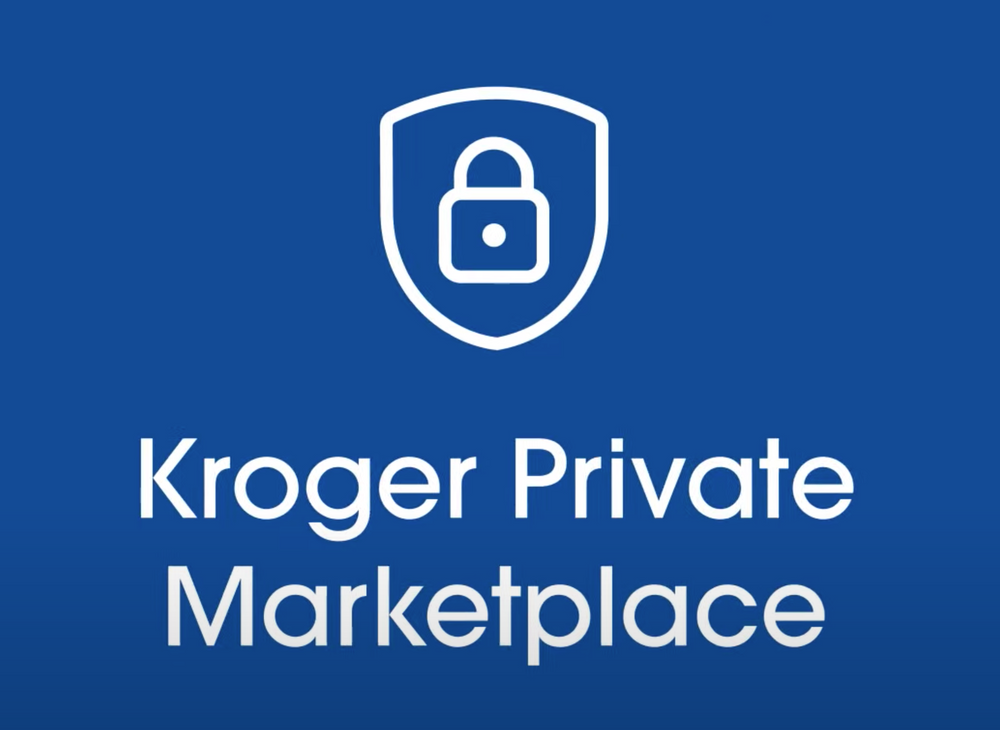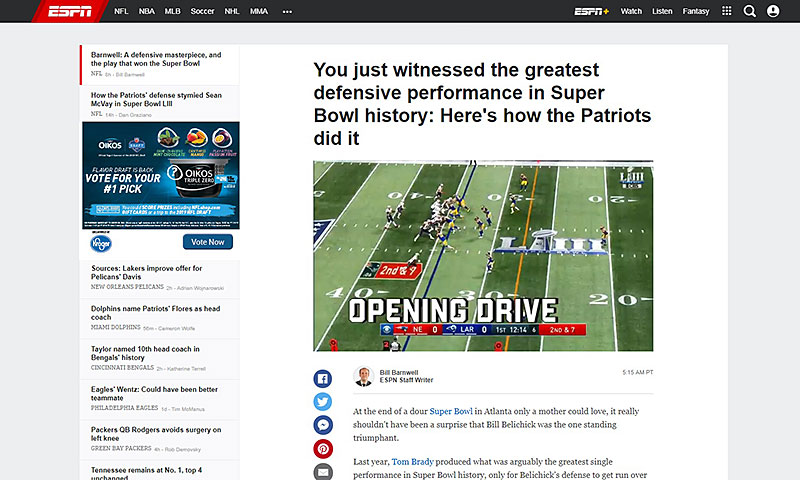By Courtney Crossley, VP-Commerce Media, The Mars Agency
On Oct. 20, Kroger announced plans to launch a private marketplace (PMP) that will allow brands and agencies to buy offsite media in conjunction with the retailer’s Kroger Precision Marketing network through a self-serve system rather than being required to use KPM’s managed service.
Currently in beta testing and tentatively scheduled for a December rollout, the offering is not a proprietary system but instead will be DSP-agnostic, meaning advertisers will be able to tap into KPM’s first-party audience data and closed-loop attribution tools while using their own preferred “demand side platform” (excluding the Amazon DSP operated by Sizmek).
In this article, The Mars Agency’s Courtney Crossley examines the potential benefits and key considerations for marketers evaluating the new service. For this analysis, she’ll primarily be looking through the lens of a shopper marketer, with a few considerations for media buyers as well. Assessing the Kroger PMP from the perspective of a national media buyer would lead to some different considerations that will be explored in the future.
Based on our initial analysis, the new Kroger PMP holds great promise for advertisers because it seeks to integrate the best of what Kroger Precision Marketing already offers with new capabilities that can improve both campaign efficiency and performance.
KPM’s advertisers can already buy a wide variety of media that includes onsite search (known as Product Listing Ads), onsite display ads (Targeted Onsite Ads), targeted digital coupons, offsite display, and a number of 3rd party placements spanning social networks, ATV (advanced television), audio, pre-roll and native environments.
Historically, the offsite display opportunities have only been available through KPM’s managed service, with onsite search/PLA the lone tactic enabled for self-serve buying (via KPM search partner PromoteIQ). This new PMP will give advertisers the option of overlaying KPM’s 1st party audience data and closed-loop attribution reporting onto offsite display campaigns self-managed through their preferred DSP — a unique approach, especially compared with Walmart’s October launch of its own DSP (powered by The Trade Desk).
The new service opens up placement opportunities by letting advertisers link ads to a landing page on Kroger banner websites or even elsewhere (excluding direct-competitor sites, of course).

Potential Benefits
The new Kroger PMP gives advertisers more control over their offsite KPM campaigns, the flexibility to manage more of their media in a single place and a greater ability to leverage retail insights to influence shopping behavior across the internet. More specifically, it will give them:
- Direct control of campaign setup and real-time optimization which, based on our experience, will lead to better results. (In KPM’s managed service, the buys are hands-off once launched.)
- Direct access to retail performance metrics such as sales lift, new buyers and household penetration, as well as access to quality controls including verification and brand safety tagging
- Increased performance (compared with traditional managed or self-service buys) through the ability to inject KPM’s 1st party data into a display buy either backed by national activity or run through a trusted DSP, which can drive efficiency in campaign targeting and flighting.
- Also enhancing performance will be a greater ability to stage multi-touch campaigns (in conjunction with national activity and continued KPM media buys) that can yield significantly higher ROAS than single-touch efforts.
Another benefit will be the ability to directly target Kroger audiences with dynamic display ads for the first time. KPM’s managed service has only offered static off site display opportunities.

Key Considerations
Initial plans for the PMP clearly illustrate that KPM is listening to feedback from its advertising partners and seeking to build tools that will better meet their needs. As with any new concept, there are always a few issues to consider. Here are the ones we’ll be watching closely:
The most obvious concern for advertisers is the potential for increased Costs. Most brands don’t have the in-house skills and/or resources needed to execute self-serve DSP buys in-house. Assigning this additional work to their media or shopper agency will result in incremental fees. However, it’s likely that CPMs for the PMP will prove to be lower than they are with KPM’s managed-service system because the premiums charged for hands-to-keyboard setup, monitoring and optimization support will be eliminated from PMP campaign fees. Those savings could then be used to cover the additional internal fees.
Although KPM hasn’t shared Pricing yet, we expect PMP buys to be more expensive on a CPM basis than standard national programmatic buys because KPM will likely charge a premium for use of its 1st party data — which, to be clear, is needed for the audience targeting and closed-loop attribution that is nearly impossible to replicate through standard 3rd party-powered DSP buys. But we expect pricing to be less than what advertisers are currently paying for offsite KPM campaigns because, as noted earlier, the managed service premiums should be eliminated.
Media dollar alignment is something to consider here: Will dollars spent through the new DSP be considered a KPM media investment, or will KPM view it as an unrelated third-party spend? Currently, dollars spent through KPM placements and partner platforms managed by KPM can unlock partnership benefits. Given that these will be third-party DSP-based buys but powered by KPM’s audience capabilities, we’re eager to see how KPM will approach these supplier investments: as a partnered buy or an off-platform, third-party placement.
Platform Overload is a concern. This latest tool adds another interface for brands to master in order to become Kroger systems experts. The list already includes Prism for campaign intake and reporting, CAAM (Creative Approval and Asset Management) for creative uploads, and PromoteIQ for paid search activity. The PMP will add more work, although a solution here would be to find an agency partner that’s an expert on all four platforms. (We happen to know of one, by the way.)
Media Placement offerings are limited to display (but include dynamic ads) for the launch, and in the near-term will expand to include CTV and video. Although there is no additional visibility into future offerings, we expect this to be a key area of development.
Audience Customization capabilities aren’t entirely clear yet either. Traditionally, the greatest advantage to a KPM partnership has been the strength of its audiences and its closed loop reporting. From what we’ve heard so far, the PMP will likely focus entirely on providing outcome-driven audiences (“awareness,” “consideration,” “conversion”) much like Facebook does. We’ll be waiting with bated breath to see exactly how much customized audience selection might be available.
Reporting could be a home run, but that will depend on how KPM can integrate with the outside DSPs. We know that KPM’s closed loop analysis will be available; what we’re waiting to see is how manual the reporting output will be. If there is a longer turnaround time for the direct data upload and the more formalized wrap reporting (if they choose to provide that here as they do with the managed service), it could impact the level of actionability from PMP buys.
Initial Recommendation
There are many situations where we can envision using the Kroger PMP to supplement or altogether replace KPM-managed offsite display campaigns for our programs. Driven by ease of management in a preferred DSP of choice, the new landing page flexibility and the increased executional scope, this looks like the better option. The key question we need to answer is the audience customization capabilities.
Given everything said above, our recommendation for brands is to get out there and test. Identify some Q4 F21 or Q1 F22 campaigns with heavy display runs, and stage them via the DSP of your choice with a Kroger PMP buy layered in. Push some PMP buys parallel to your planned shopper executions within KPM — take the opportunity to potentially expose your KPM audiences across channels to both onsite and offsite media. We’d even encourage taking a stab at layering in some PMP-enabled buys as a line item within national display activations, then comparing (expected) performance lifts. These are relatively low-risk ways to gain immediate, actionable learning that will help you decide how best to proceed.
____________

As VP-Commerce Media at The Mars Agency, Courtney Crossley develops holistic, business-led strategies across all client touch points with the goal of driving top-line results. She brings a wealth of end-to-end experience from prior roles at KPM, where she helped brands better connect with shoppers, and at Google, where she advised c-suite leaders across a diversified client portfolio on how to adopt a more digital mindset. Courtney has a passion for empowering brands both internally and through their relationships with grocers to help them innovate in the digital media arena.